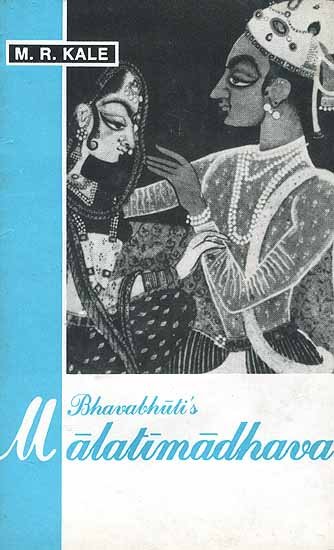Malatimadhava (study)
by Jintu Moni Dutta | 2017 | 52,468 words | ISBN-10: 8120813057 | ISBN-13: 9788120813052
This page relates ‘Pancali Riti’ from the English study on the Malatimadhava of Bhavabhuti:—A Prakarana type of Drama in ten acts revolving around the love-story of Malati (from Padmāvatī) and Madhava (from Vidarbha). This study discusses the history of its author and the literary, social, religious, historical and cultural aspects of the Malatimadhava.
Part 3.3c - Pāñcālī Rīti
The Pāñcālī rīti is a via-media between the two opposite rītis viz., the Vaidarbhī and the Gauḍī.[1] It admits partly the characteristics of both the rītis and hence is an agreeable combination of hard and soft consonants. Here dipthongs are not onerous and a few compounds which are found here and there are mostly simple ones.
In the Mālatīmādhava, the verse dhairyaṃ nidhehi hṛdaye....................etc[2] is a good example of Pāñcālī rīti. This verse contains hard consonants viz., ṅa, ṣa, ṇa etc whereas soft consosonents [consonants?] viz., va, pa, ha, ka etc are also suitably employed. Moreover, dipthongs viz., mbha, ṭṭa, sya are used which are not onerus.
Footnotes and references:
[1]:
varṇaih śeṣaiḥ punardvayoḥ /
samastapañcaṣapado bandhaḥ pāñcālikā matā //
Sāhityadarpaṇa,IX.4
